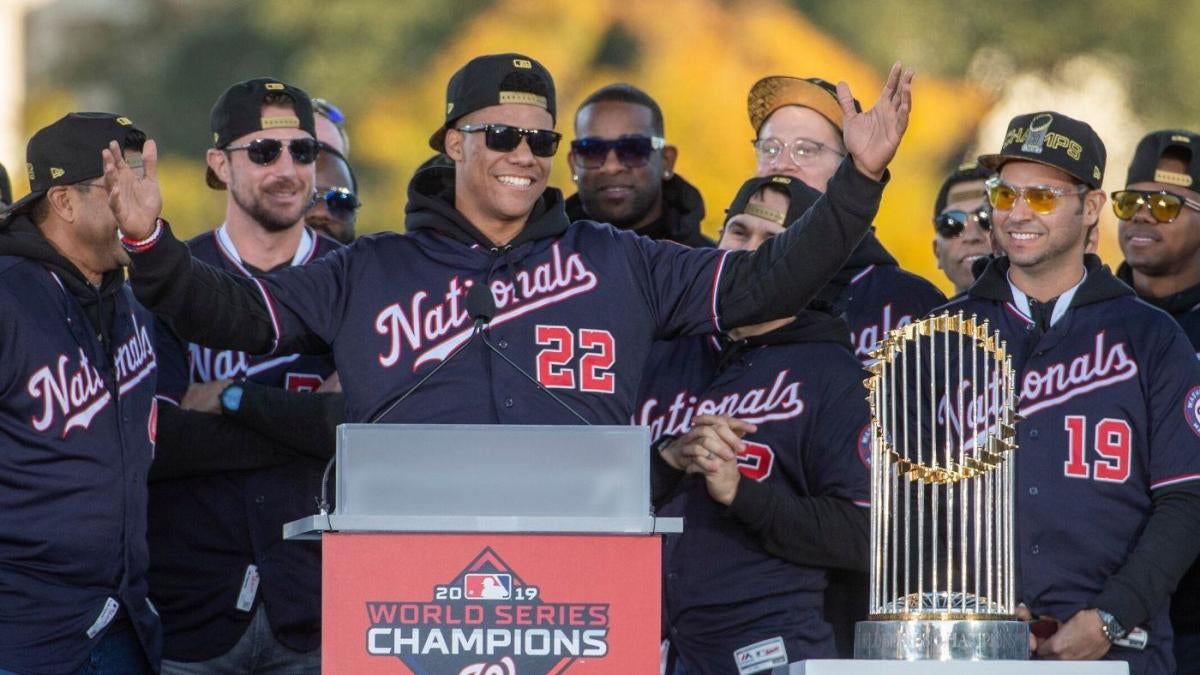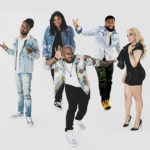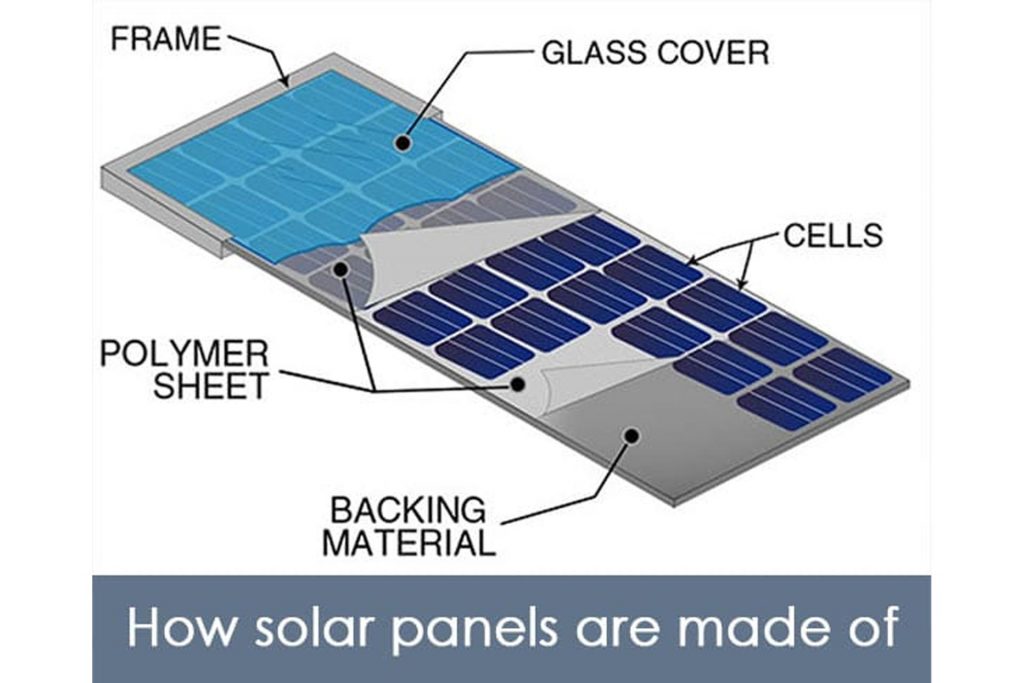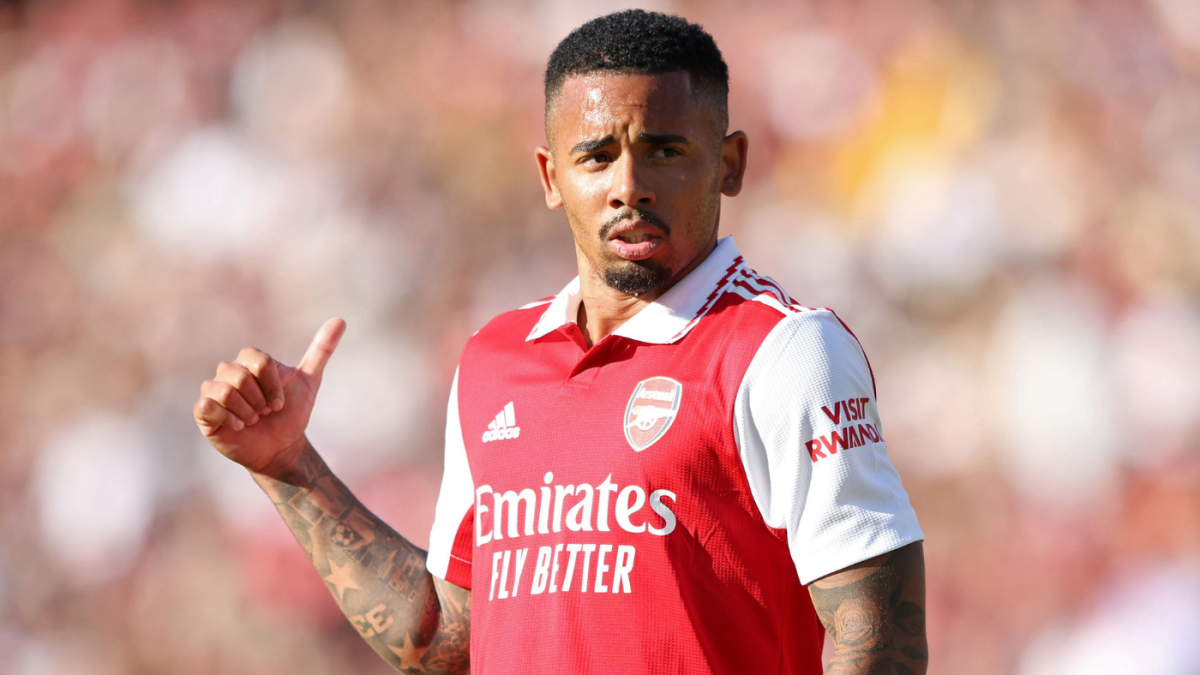How did the Nationals get here? Four reasons they went from 2019 champs to 2022 chumps
Written by ABC Audio ALL RIGHTS RESERVED on August 4, 2022


Less than three years ago the Washington Nationals were on top of the baseball world. They completed an improbable run to grabbing the 2019 World Series championship after being a) 19-31 on May 23, b) down two runs in the eighth inning of the Wild Card Game, c) down two runs in the eighth inning of NLDS Game 5, and d) down three games to two in the World Series. The 2019 Nationals refused to die.
Fast forward to today and the Nationals are a last place club barreling toward their second straight season of at least 95 losses. Since winning the World Series less than three years ago, Washington has a .388 winning percentage, which is a 99-loss pace in a 162-game schedule. Only the Pittsburgh Pirates (.372) and Arizona Diamondbacks (.378) have worst winning percentages since the start of the 2020 season.
We haven’t seen a World Series winner crash this hard and this fast since the old Florida Marlins fire sale days, and the Nationals themselves held a fire sale this week. They did what seemed unthinkable a few months ago, and traded wunderkind Juan Soto to the San Diego Padres for a five-prospect package. Soto rejected a 15-year, $440 million extension a few weeks back and it seemingly pushed the team to act.
“He is a generational player. He’s a wonderful person and a true gentleman of the game. What can you say about Juan Soto that hasn’t already been said?” Nationals GM Mike Rizzo told MLB.com after the trade. “… There was no edict to trade him or not to trade him. It was business as usual. Ownership gave me the latitude to make a good baseball deal if I felt it was a franchise-altering deal, and it turned out we got one to our liking and it worked. Kudos to the other side for making it work.”
Soto is one of only 44 players in MLB history to reach 2,400 at-bats before his 24th birthday, so right away that puts him in an exclusive club, and among those 44 players he ranks second in on-base percentage behind Ted Williams and fourth in OPS+ behind Williams, Ty Cobb, and Mike Trout. This isn’t just a great young player. This is a generational talent doing things that have rarely been done.
How do things go so wrong, so quickly that less than three years after winning the World Series, you’re trading away a generational talent and franchise icon with another two seasons of arbitration-eligibility remaining? If Soto was coming up on free agency, OK, I could understand, but he was tied to the Nationals through 2024. The organization must be in dire straights to deem trading this guy the best possible move.
A team doesn’t fall this far, this fast without a lot going wrong. Here are four reasons the Nationals have gone from World Series champion to last place team (and trading away Soto) in three years’ time.
1. Too much elite talent out the door
The Nationals won the 2019 World Series not with depth, but with high-end talent performing at its best. Soto and Anthony Rendon carried the offense (with a few timely Howie Kendrick home runs mixed in) and the trio of Max Scherzer, Stephen Strasburg, and Patrick Corbin combined to throw nearly 60 percent of the team’s postseason innings. You’re supposed to lean on your stars in October, and no champion in recent memory leaned on their stars as much as the 2019 Nationals.
All of that elite talent — or, more accurately, elite performance — is gone. Soto, Scherzer, and Trea Turner were traded away and Rendon left as a free agent. Strasburg and Corbin are still with the Nationals but are shells of their 2019 selves. Strasburg shows this was not simply a “keep the player” problem. He was elite in 2019, now he’s not. Same with Rendon. So, the Nationals were getting these high-end performances in 2019 that are no longer there, either because the player is gone or has declined.
To put it another way, Washington’s championship core quickly became less than championship-caliber. Rendon’s immediate free agent defection and Strasburg’s and Corbin’s decline removed a lot of impact from the roster. Almost every year we hear the team that wins the World Series has the potential to be a dynasty — it’s rarely true, but we hear it — because they have controllable impact talent. That wasn’t the case with the roster the Nationals ran out there in 2019. Age and free agency made it pretty clear their core wasn’t going to be together much longer.
2. Free agent contracts going south
Corbin and Strasburg combined to post 10.6 WAR in 2019 and that’s regular season only. They’ve been worth minus-2.0 WAR in the three years since. The Nationals won the World Series in Year 1 of Corbin’s six-year, $140 million contract, so from the “flags fly forever” perspective, it was well worth it. He is now the worst starting pitcher in baseball though, and if not for that World Series win, Corbin would go down as one of the worst free agent signings in recent baseball history. (And he still might.)
Strasburg was named World Series MVP in 2019, opted out of the four years and $100 million remaining on his contract, then re-signed with the club on a new seven-year, $245 million deal. It was the richest pitching contract in baseball history at the time. (That lasted for about 24 hours because Gerrit Cole signed his nine-year, $324 million contract the very next day.) Injuries have limited Strasburg to eight ineffective starts since signing his new deal, and it’s unclear how much he’ll be able to contribute in the future. That contract is a total disaster.
It’s not just the Corbin and Strasburg contracts that went south either. The Nationals re-signed Kendrick to a one-year, $6.25 million deal after the World Series and he was a replacement level DH in 2020. They re-signed Daniel Hudson to a two-year, $11 million deal and received 54 1/3 middle reliever quality innings before trading him away. Washington gave Will Harris three years and $24 million and he’s thrown 23 2/3 innings in those three years, including none in 2022. Jon Lester, Starlin Castro, Eric Thames, Brad Hand, and even Nelson Cruz this year are free agent signings that actively hurt the team.
Washington’s best free agent signing since the 2019 World Series is, by a mile, Kyle Schwarber. They gave him one year and $10 million last offseason, then socked 25 homers in 72 games before getting hurt and being traded away last season. Their second best free agent signing since the 2019 World Series is Josh Harrison, who originally signed with the club on a minor league deal and gave them a .291/.363/.431 slash line in 123 games spanning two seasons. As far as free agent success stories go, that isn’t much.
Years ago, Ben Lindbergh did the research and found World Series winners re-sign their own free agents at a higher rate than other teams, and that makes sense. There’s an emotional component to those signings, plus it can be easy to fall into the “we have the magic formula” trap and think you need to keep the band together. The Nationals were no different. They re-signed Strasburg, Kendrick, Hudson, Aníbal Sánchez, and others to deals that didn’t work out at all. And on top of that their other signings (Harris, Lester, etc.) largely backfired. Washington’s attempts to complement what was left of their core worked out very poorly.
3. Not enough ‘stealth’ pickups
Who is Washington’s Chris Taylor? Their Clay Holmes? Is it 35-year-old Paolo Espino and his 4.10 ERA in 182 1/3 swingman innings the last three years? The Nationals don’t have a Taylor/Holmes type and unearthing hidden gems is a common theme among baseball’s best teams. The best teams build their roster through every avenue possible. The draft, trades, free agency, waivers, and stealing undervalued players away from other organizations. The Nationals are missing that last part.
In the grand scheme of things, this is small beans. The Nationals weren’t one or two stealth pickups away from staying in contention and keeping Soto. It does speak to a larger problem though. Washington’s research and development department lags behind the sport’s elite teams. The proof is on the field. Too many moves aren’t working out and they infrequently dig up surprise difference-makers. No stealth pickups is the symptom. An R&D group that is not on par with the league’s best is the illness.
4. Poor player development
This is the single biggest problem for the Nationals right now. Their farm system simply has not produced enough talent to sustain a postseason contender, and that’s saying something for a organization that pumped out Soto not too long ago. Baseball America ranked Washington’s farm system 26th in baseball this spring. They were 30th last year, 28th in 2020, and 24th in 2019. Spend that many years near the bottom of the rankings and you’re going to pay a price at some point.
Baseball America ranked Washington’s system 12th in baseball in 2018, the year before they won the World Series. It is the last time they ranked in the top half of the league. Look at their top five prospects that year:
- OF Victor Robles: Starting center fielder on the 2019 World Series team, but a .217/.300/.308 hitter since. Robles seems to have fallen out of favor with the organization.
- OF Juan Soto: Incredible player. You can spend an entire lifetime following prospects and you still may never see your favorite team produce a player this good.
- RHP Erick Fedde: Former first-round pick did not pitch in the 2019 postseason and has a career 5.19 ERA, including a 5.08 ERA in 276 1/3 innings since the Word Series title.
- IF Carter Kieboom: Another former first-round pick. Kieboom had a cup of coffee in 2019 and is a career .197/.304/.285 hitter in the big leagues. Like Robles, he seems to be out of favor.
- LHP Seth Romero: Yet another first-round pick. He has thrown 85 2/3 innings in parts of five profession seasons and has not pitched this year due to injury.
Soto is a once in a generation prospect success story and Robles did contribute to a World Series title. Other than those two, the farm system has produced very little in recent years. Four players on Washington’s active roster originally signed with the team as amateurs and came up through the system: Robles, backup catcher Tres Barrera, shortstop Luis García, and outfielder Yadiel Hernandez. García, No. 6 on that 2018 list, is the only one with a realistic chance to be on Washington’s next contending team.
This is a huge problem! And isn’t it at least a little concerning the Nationals traded Soto for prospects? How confident are you they can get the most out of CJ Abrams, MacKenzie Gore, et al? They did get it right with Soto, and Turner and Bryce Harper before him, so the Nationals have had success with truly elite talent. Maybe the guys they received in the Soto trade will pan out and Washington will be where they want to be in 2-3 years. That said, their player development track record warrants being skeptical.
So where do the Nationals go next now that Soto has been traded? Well, they’re going to go to a new owner, we know that much. The team is for sale and we’re not going to know the franchise’s direction until they’re sold. Does the new ownership group endorse a long multi-year rebuild? They may have no choice. Do they want to make an effort to contend for an extended postseason spot in 2023? It may sound crazy but it’s not. Look what the Padres tried in 2015. Everything is a mystery until the new owner takes over.
We know this much: Washington must improve a few things behind the scenes no matter who buys the franchise. There are player development and R&D issues that must be addressed to become a consistent contender in this era of baseball. The Nationals won 93-plus games five times in an eight-game span from 2012-19, but what worked back then doesn’t necessarily work now. The Soto trade was an unfortunate — and I’d argue unnecessary step — but what’s done is done, and now the Nationals must begin the process of getting the organization back on the rails.
The post How did the Nationals get here? Four reasons they went from 2019 champs to 2022 chumps first appeared on CBS Sports.







